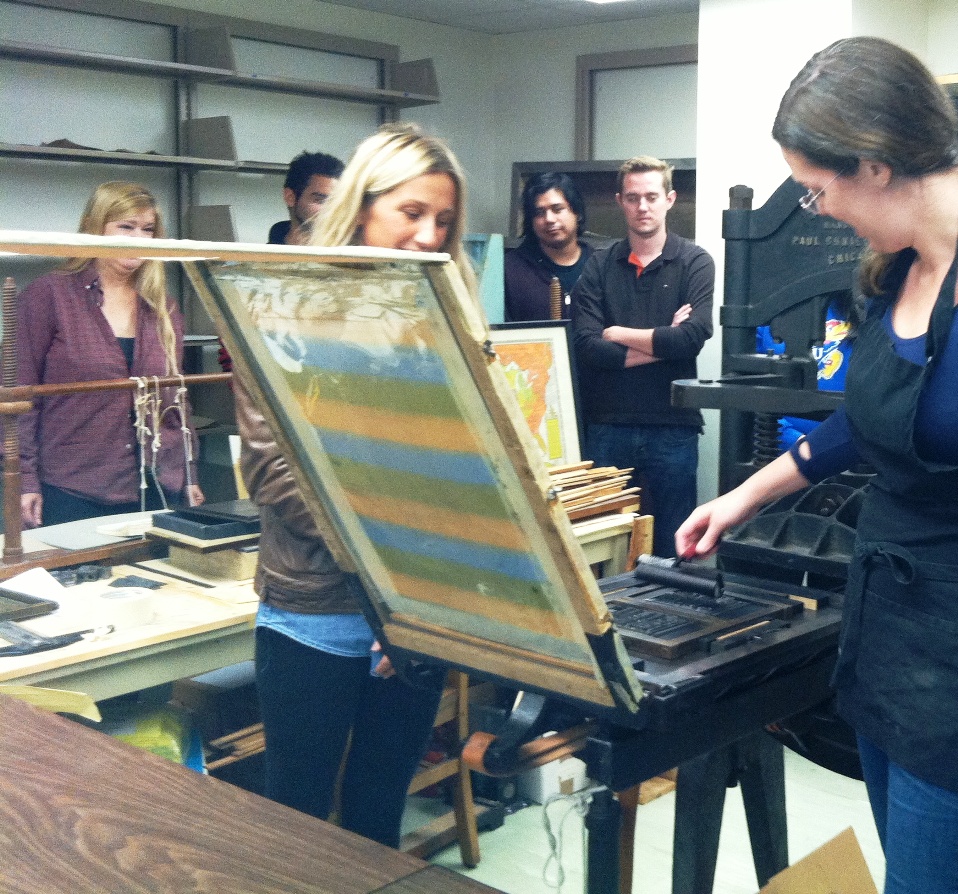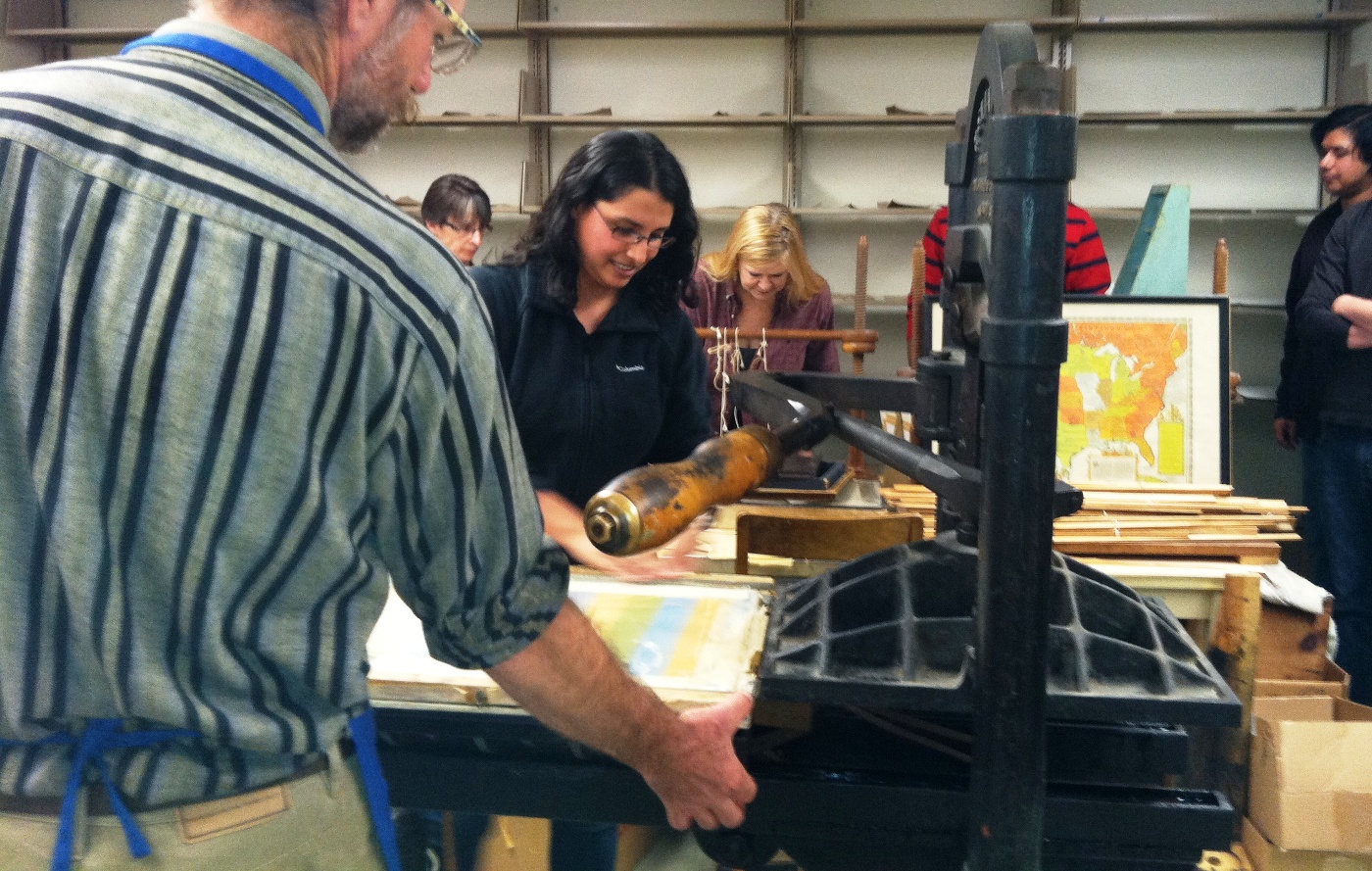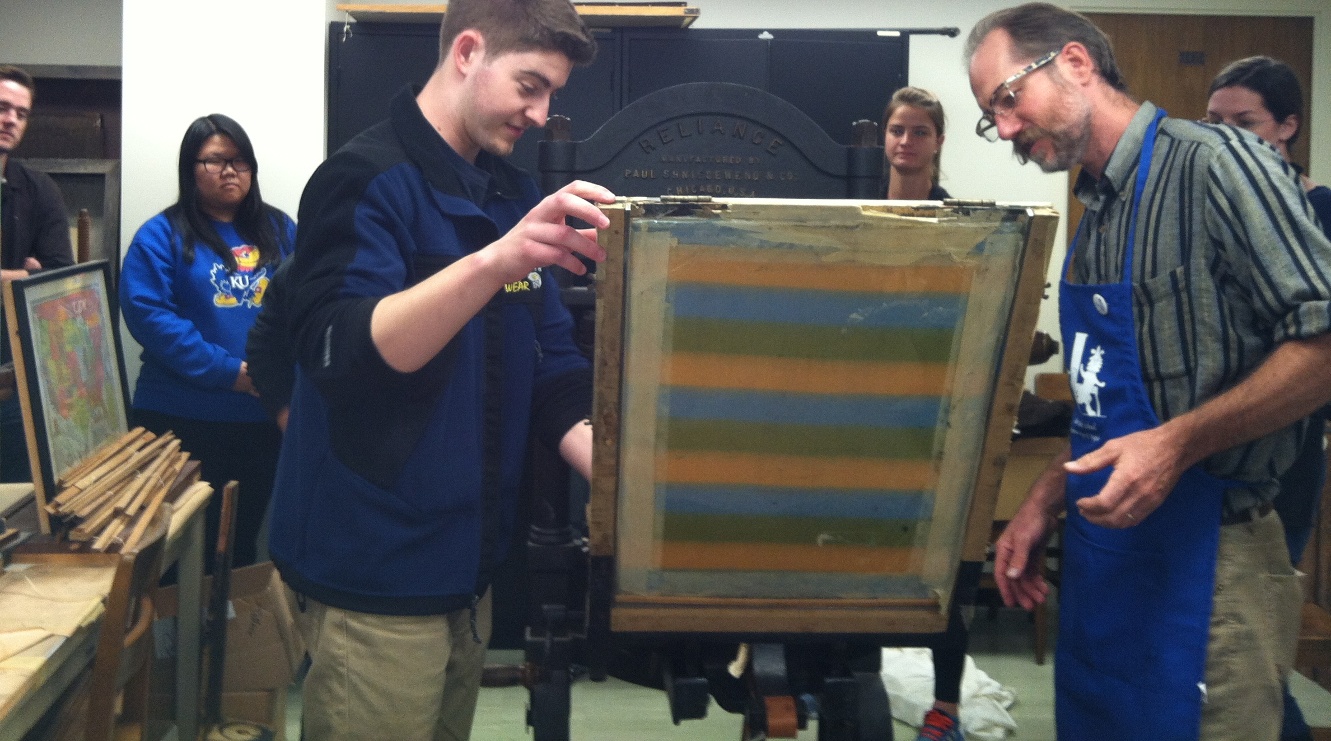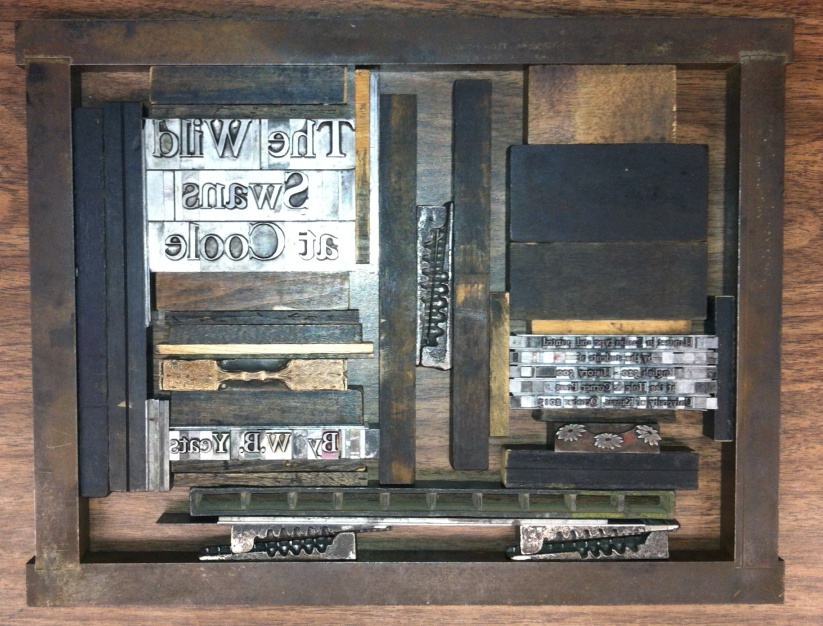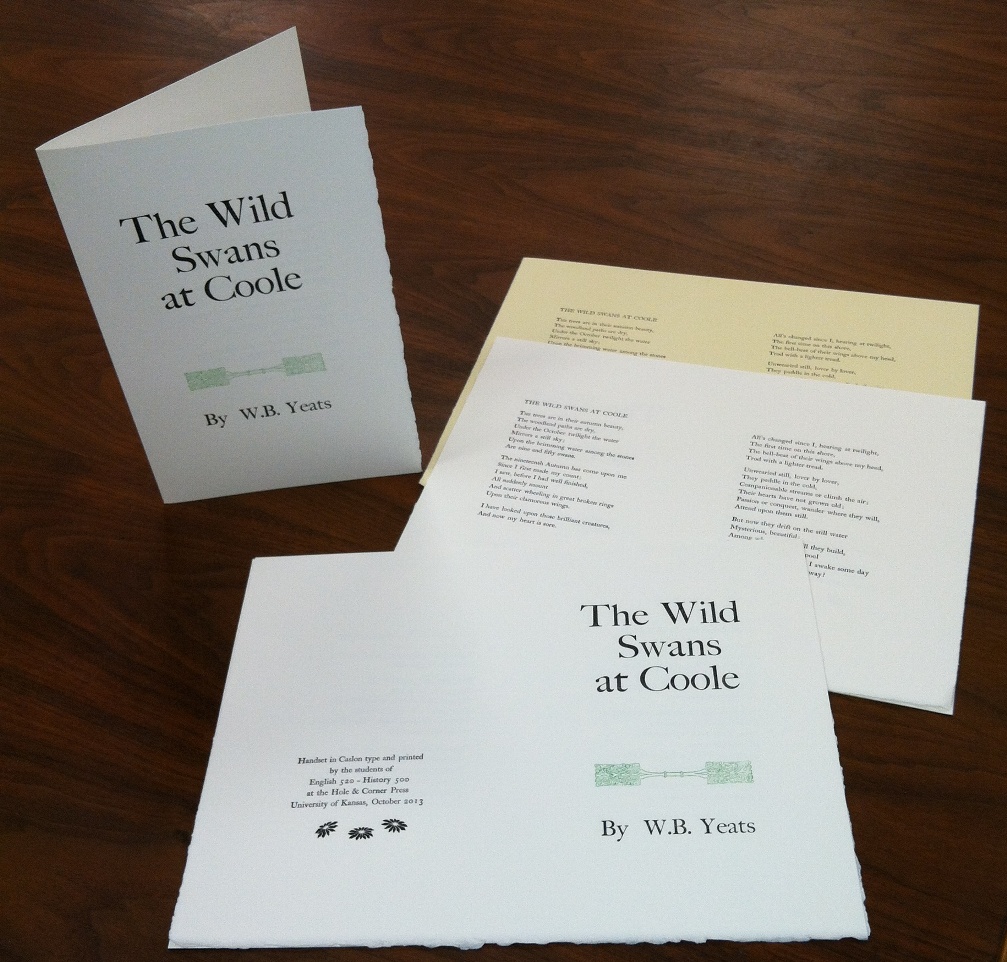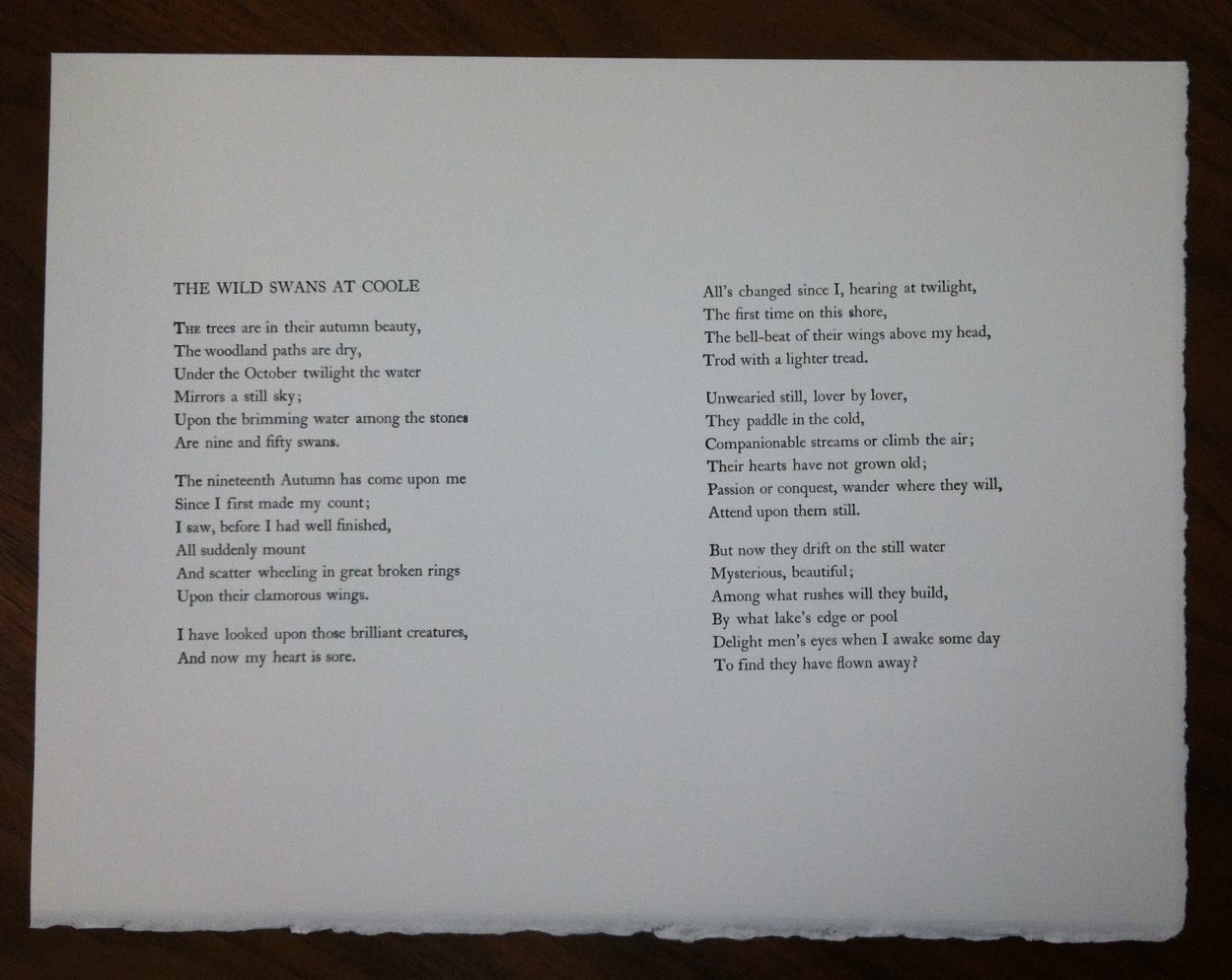First Impressions
November 9th, 2013Setting type may not be as easy as it looks, but it is good fun! Throughout October intrepid students in the History of the Book (English 520 / History 500) made several trips to the press room in Spencer’s basement to execute a printing project using the library’s historic presses. Reading about printing during the hand press era offers some insight, but it is easy for the process to remain shrouded in mystery until you try it out yourself. As you stand in front of a case of type, the logistical considerations involved in producing a book–such as format, imposition, line length, and style and size of type–quickly take on a new reality.
Students from The History of the Book (ENGL 520 / HIST 500) operate the press with
the assistance of printer Tim O’Brien (in the blue apron and striped shirt).
Since Spencer houses wonderful Irish Collections, we elected to print W. B. Yeats’s poem “The Wild Swans at Coole,” which has an appropriately autumnal theme. Each student set two lines of the poem, picking type, letter by letter, from the case and depositing it in a composing stick held in the opposite hand. (If you are right-handed, you would hold the composing stick in your left hand and pick with the right.) The set lines were then transferred to a tray called a “galley” for assembly as a page. Wooden furniture and metal quoins were used to lock the composed pages into a metal chase, which was then positioned in the press.
As an early proof of the poem quickly revealed, setting type is a skill that requires practice and concentration. Some speculate that the caution to “mind one’s p’s and q’s” originates in printing, since these two pieces of type are easily confused. In examining our proof, it seems it was our b’s and d’s that needed minding. Though excessive errors could lead to docked wages in an eighteenth-century print shop, for us, making (and correcting) mistakes was an instructive part of the process.
“If at first you don’t succeed…”: proofing and correcting our mistakes.
The project was printed in “folio” format, each printed sheet folded once to create two leaves (or four pages). First, the class printed the “outer forme” (containing the title page and the colophon). Then, after some drying time, we “perfected” the sheets by printing the “inner forme” (containing the poem’s text) on the verso.
Outer Forme: the title page and colophon locked in the chase. Wooden “furniture” and
metal “quoins” provide the pressure needed to keep everything wedged tightly in place.
In the early days, printing usually involved two pressman–one to insert the paper and work the press, and the second to ink the type. Under the guidance of printer Tim O’Brien, the students each took a turn at both roles. As the class discovered, there is definitely a genuine satisfaction that comes from operating a hand press. Of course, the best part is that it produces such wonderfully tangible mementos!
Ta-dah! The finished product. To read the full text of “The Wild Swans at Coole” click the image on the right to enlarge.
Elspeth Healey
Special Collections Librarian

